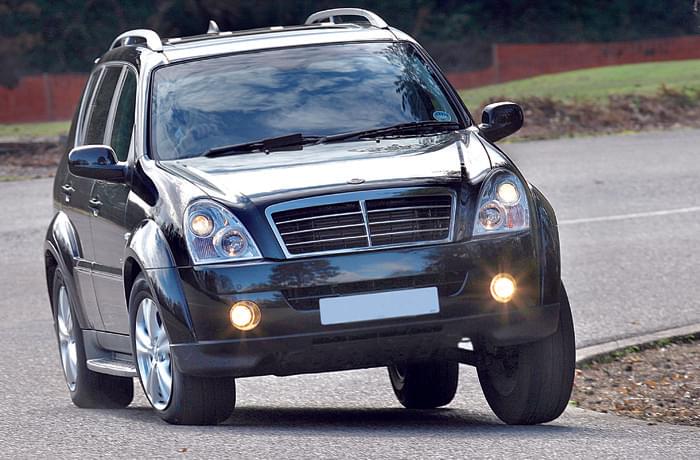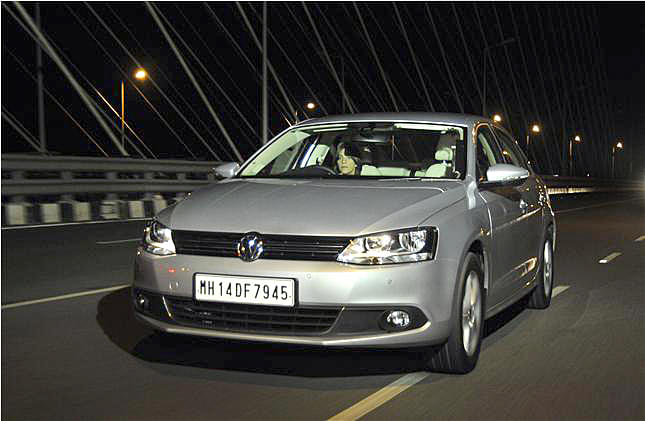The Rexton is to SsangYong what the Bolero is to Mahindra. It’s an old-school SUV that has loyally served the minnow Korean automaker for over a decade. However, the Rexton is as well known in India as the Bolero is in Korea. So what will that mean when Mahindra, SsangYong’s new owner, brings this SUV to India? Will it be badged a SsangYong or a Mahindra? Will it be called the Rexton or given a Mahindra nomenclature (XUV700?). These are complex questions to which perhaps Mahindra too doesn’t have clear answers yet. What we do know for sure is that the Rexton will be the first product from the newly acquired SsangYong to be sold in India later this year. But is the Rexton a good fit alongside the current Mahindra range? Can it compete with the formidable Fortuner? Is it well-suited to our roads? Questions and more questions – a long drive in SsangYong’s war horse is the only way to answer them.
Launched back in 2001, the Rexton has been updated over the years, but the underpinnings
are still very much from the first-generation Mercedes M-class (W163) it was originally based on. The chassis is a traditional body-on-frame design with a rugged multi-link live axle bolted
on to it at the rear, and double wishbones suspending it at the front. The Rexton is likely to come with just one engine – an old Mercedes-sourced 2.7-litre, in-line five-cylinder, DOHC engine that is longitudinally mounted and develops a modest 165bhp. The car I drove was mated to a five-speed automatic transmission (also Mercedes-sourced) which should be available in India too, but it’s likely that the five-speed manual will be the mainstay of the range here. The on-demand all-wheel-drive system has a low-range transfer case which, along with the generous 230mm ground clearance, should suit the off-roading needs of most Indian customers.
With a 4.72-metre length, there are only a handful of SUVs in India that are bigger. But it’s only when you walk right up to the Rexton that you realise how big it is. For all its size, the Rexton lacks road presence and simply didn’t stand out in the car park of the Autocar UK office from where I first picked it up.
I can imagine the Rexton looking rather tame next to the Ford Endeavour, which is only a bit bigger. Why, even the Rexton’s new relative, the XUV500, has far more street cred despite being much smaller. That leads us to the biggest weakness of the Rexton – its styling. In fact, SsangYong has a history of some pretty strange-looking products, from the weird Kyron to the even weirder Rodius. The Rexton, which is from the same school of design, thankfully doesn’t look as bad, but the styling still has some oddball elements that are hard to miss.
The nose looks like an old Merc grille has been pasted on and the headlights are oddly shaped too. From other angles, the Rexton is more conventional looking though the wheel arches are disproportionately large and dwarf the 18-inch wheels. Otherwise, from the side, the Rexton has a clean profile with a generous glass area and a tough-looking running board. Except for a rear roof spoiler, which wouldn’t look out of place on an F1 car, there’s not much visual drama at the rear. In fact, the overall styling is pretty dated and points to the Rexton’s decade-old vintage. This could be the biggest challenge for the Rexton when it comes to India. It has no stand-out styling element that’s really good.
The interiors don’t stand out either, but fit and finish is reasonably good. The plastics, though not oozing with quality, have a nice feel with reasonably soft textures. It’s only some of
the lower plastics which feel cheap and shiny, but overall the interiors feel better put together than the XUV500’s. The interior styling is uncharacteristically restrained too. The dashboard looks pretty simple with straight lines and simple surfaces. The large steering wheel boss is lined with buttons, which points to the equipment the Rexton comes with. No doubt, this is a fully-loaded car and like most Korean brands, SsangYong too believes in pampering customers to the hilt.
Like most body-on-frame cars, the seats are mounted on a high floor and it’s quite a step up into the cabin. But once you’ve made the effort, you are rewarded with a superb view from the driver’s perch. The seats are a bit hard and not particularly comfortable, though there are enough adjustments to help you find the perfect driving position.
The middle row is pretty spacious too and three average-sized adults can be accommodated quite easily. But again, comfort is compromised by the high floor that pushes your feet up, and by the cushions which on this UK-spec car didn’t feel particularly plush. I am sure for the Indian version Mahindra will revamp the interiors considerably to suit local requirements – a good back seat being a prime one.
The Rexton comes with a seven-seat configuration, but the car I had didn’t have the rear bench in place, so it wasn’t possible to judge how good the crucial third row is. That said, luggage space without the rearmost seats is huge and with the middle-row seats flipped down, big enough to swallow North and South Korea. The load lip is quite high though.
Within the first 50 metres of driving the Rexton, you realise that it’s going to have its work cut out. It’s hugely cumbersome to drive in town and a pain to park. The steering is quite vague and the ride never feels settled. In fact, even on British roads, the Rexton felt bumpy with sharper edges like manhole covers thudding through. The suspension is just too soft, there’s too much lean through corners and on an undulating, winding road, the Rexton feels like a drunken whale. The good thing is that the suspension works quite noiselessly and there’s no sense of harshness at any point.
The 2.7-litre engine is another disappointment. It feels quite lethargic in most conditions and the sluggish auto ’box doesn’t help matters. Be it in town or on the highway, you never feel you have a surplus of power and hence, because the engine needs to be worked hard, it feels quite noisy too. Besides, the five-cylinder Mercedes engines of yore were not the quietest either. Overall refinement levels are just about average, but at motorway speeds the Rexton’s upright shape did generate a fair amount of wind noise.
Mahindra is likely to assemble the Rexton in India to lower costs, but what will it be priced at and, more importantly, where will it be positioned? Looking at the size and spec of the vehicle, it will clearly be slotted in the rather sizeable gap between the XUV500 and the Toyota Fortuner, so expect it to be priced in the Rs 16-18 lakh range. It’s a sweet spot that doesn’t have much competition and, given Mahindra’s reputation for spotting an opportunity and making the most of it, the Rexton could carve a happy niche for itself.









































